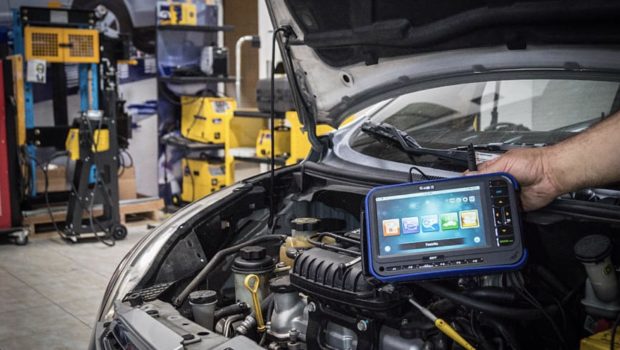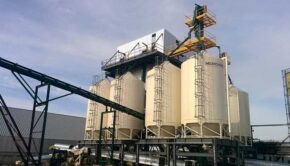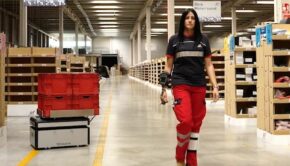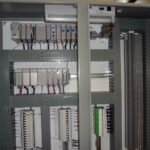New Tech in the Automotive Repair Industry
Cars are technological wonders these days. The latest models come loaded with technologies, including adaptive cruise control that matches the speed of the car you’re following and lane departure warnings that signal you when you’ve left your lane. Those are just a couple of driver’s assistance technologies available. There is far more technology under the hood, creating a complex network.
A car tuneup today is quite different than one 25 years ago. You could probably handle your own tuneup with a wrench and some oil years ago. Your mechanic now probably scans or “connects” to your car via a port to run a computer or tablet-based diagnostic on the vehicle and can reboot the car’s system to fix some issues.
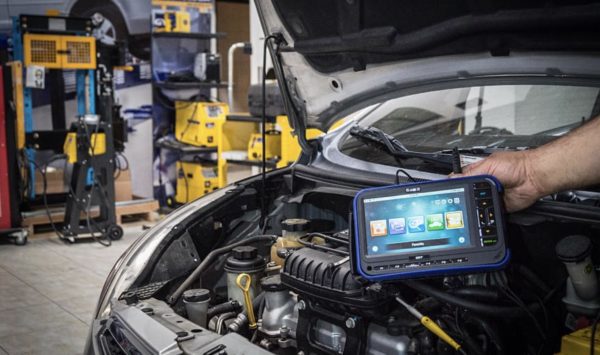
Source: Pxfuel
Unfathomable advances such as driverless cars are a reality today. As technologies continue to improve and vehicle companies adapt them to car manufacturing, the auto repair industry has to keep up. Here’s a look at how technological advancements are transforming the automotive repair industry:
Vehicle Scanning Tools
As if a vehicle wasn’t complicated enough, cars today are more complex than ever because of the amount of coding and tech integrated into all the systems. Diagnosing a problem could take hours due to all the interconnectedness in the systems. Shops can save customers time and money by using vehicle diagnostic tools like scanners to pinpoint the problem faster.
If your car has been in a collision or you’re having mechanical problems, taking your car to a modern repair facility may likely solve the issue faster. The repair facility will connect the vehicle scanner, which often looks like a handheld tablet, to your vehicle’s port. Your car’s computer system will generate a report of system events, triggers, and failures.
The report is often still too complicated to understand, even for a repair professional. Depending on the vehicle scanning system, the vehicle’s printout is emailed to a third-party diagnostic facility for analysis. The process is fairly fast — a diagnostic report is often returned to the repair technician in 30 minutes. The information provided gives the technician the info they need so they can repair your car. With a 30-minute return window, these scanners can save both you and your repair shop money.
Warehouse Drones
A single Toyota vehicle is made up of 30,000 parts. Car parts stores and warehouses probably stock several makes and models-worth of parts, amounting to hundreds of thousands of items on their warehouse shelves. Can you imagine how difficult it would be to find the proverbial needle in a haystack — say, a front clip for a 2016 Toyota Rav 4?
Warehouses are turning to drones to help them locate the parts they need. Operating a drone to identify and photograph a specific bin in a large warehouse can confirm if the part is in stock or not. The method saves employees the time of having to find the aisle and climb a ladder, only to find out the item is not in stock.
As technology improves, warehouse drones may soon be able to do more than find the location of the part. They may be able to collect the car part and deliver it to the sales desk. Amazon has been testing Prime Air delivery service for the last few years to use drones to autonomously deliver shipments from the Amazon warehouse straight to a customer’s home.
Customer Relationship Management (CRM)
CRM technology helps automotive businesses manage their customers’ through a database. The simplest CRM software stores customer contact data. But more sophisticated systems can store historical customer information, including how often the customer visits, who referred the client, where they live, repair and maintenance history of the vehicle, even how much the customer spends.
Once a more detailed database is built, auto shop owners can generate reports that provide a financial and demographical customer snapshot. The information can be used to target similar clients in marketing campaigns or send email newsletters and offers to existing customers.
A CRM system is beneficial to both the business and the customer. Customers will appreciate the personalized customer experience due to the data collected by CRM technology. Your customers can then receive reminders of when their vehicle is due for maintenance, receive annual vehicle expenditure reports for tax purposes, or work with a technician to examine a historical vehicle repair report to review past repairs and better diagnose a vehicle’s ongoing troubles.
Technology for Better Customer Service
Repair shops that embrace new technology ultimately provide better customer service to their clients. Technology helps technicians make faster, more accurate diagnostics that could save customers money on hours of diagnostics. Operations that use CRM technology to track and follow up with customers can remind them of when their next service is due or if there’s a recall the client may not be aware about. New technology has a learning curve. Technicians may need some time to train and learn how to use the new advancements, but the investment is well worth it.

